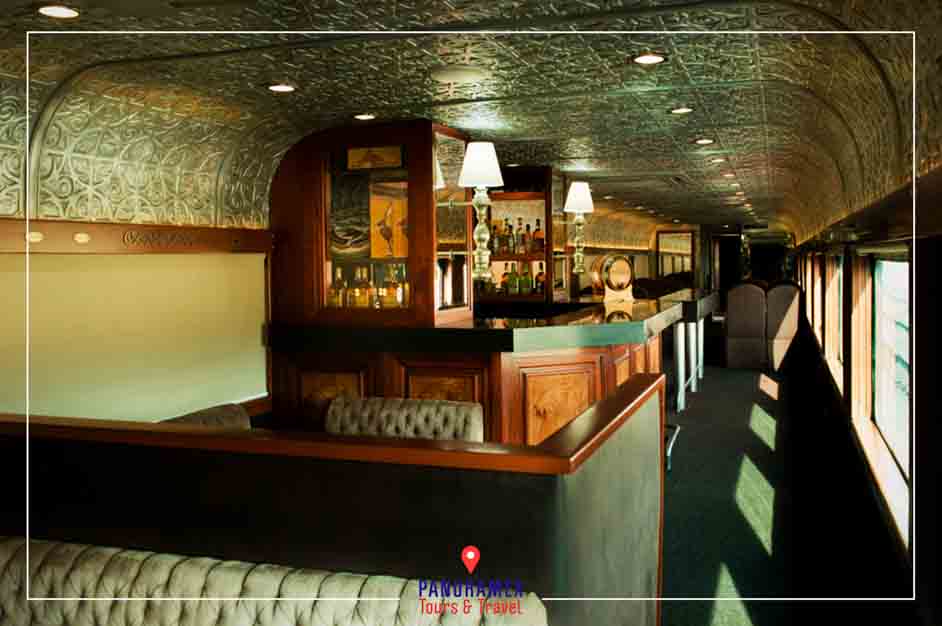Train to Tequila Jose cuervo very Saturday of the year you can experience traveling in the most beautiful passenger train in Mexico. Jose Cuervo Express.
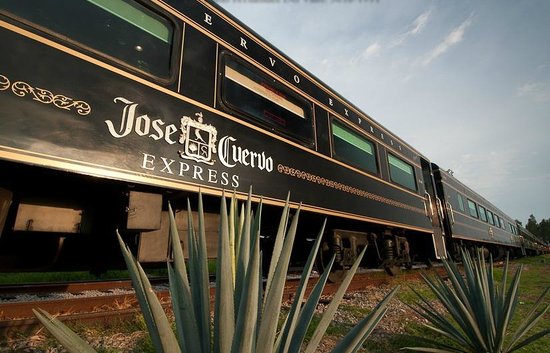
Every Saturday of the year you can live this experience of traveling in the most beautiful passenger train in Mexico. Jose Cuervo Express travels through the agave landscape with the magic of yesteryear.
The train makes its routes every Saturday leaving the Ferromex station of Guadalajara and arriving at Tequila Pueblo Mágico.
We visit the town of Tequila Magical Town, knowing the Jose Rovo redhead distillery where we will know the process of making the tequila agave tasting and tasting of direct tequila from the alembic at 55 ° alcohol, we will have free time in the Tequila Town to be able to Eat at any of the restaurants in town.
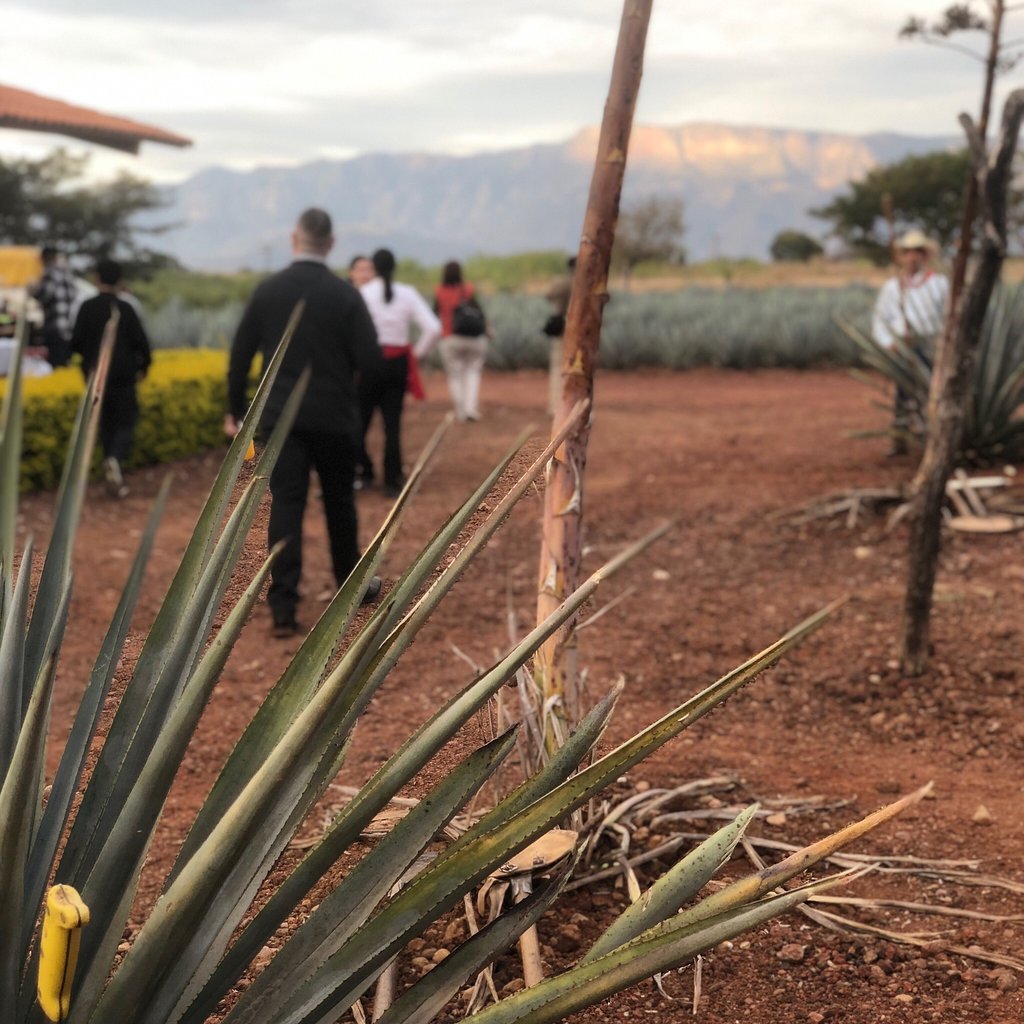
After lunch we will have a presentation of folkloric ballet and lucky charras at the Cuervo Forum facilities with a delicious toast with family reserve tequila.
We also visit the agave fields that are a World Heritage Site where we have an exhibition of Jima.
La Rojeña is the oldest Jose Cuervo tequilera in Latin America with 250 years, located in the town of Tequila do not miss the opportunity to meet her.
What are the sunrise and sunset experiences on the Jose Cuervo Express train?
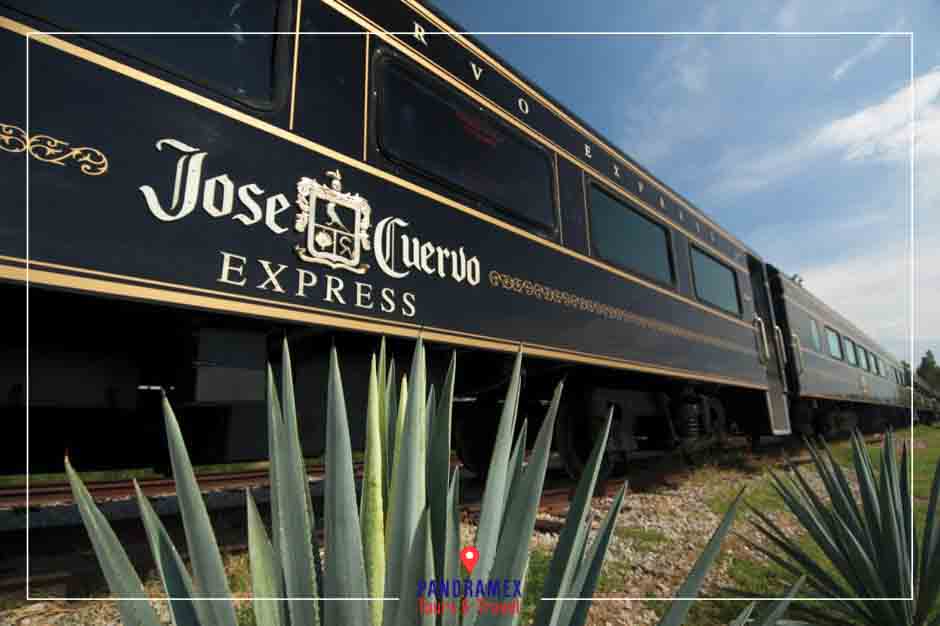
To offer a complete experience of include two experiences: Sunrise or Sunset, this is mainly in the bus and train combination transfers, when we have the bus transfer we visit the agave landscape that is a World Heritage Site either in the morning or in the afternoon.
Train to Tequila Jose Cuervo
The “Dawn” experience Jose Cuervo Express.
Travel the Guadalajara – Tequila transfer on the Jose Cuervo Express train and Transfer Tequila – Guadalajara on a Tourist bus.
The “Sunset” Jose Cuervo Express experience.
Travel the Transfer Guadalajara – Tequila by Bus and Transfer tequila –Guadalajara on the Jose Cuervo Express train.
Train to Tequila Jose Cuervo
We took on the task of giving us a tour on the Jose Cuervo Express Train to learn more about tequila. Enjoy the open bar in the luxury train that started operations in 2012 with a capacity of more than 375 passengers in its 7 luxurious cars
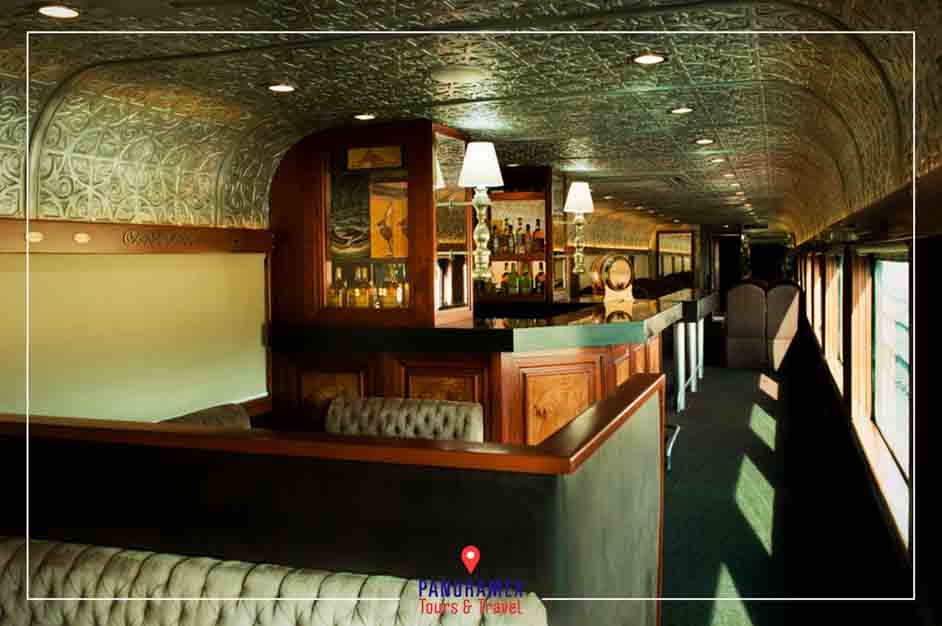
Every Saturday Efrain lifts the coa, that peculiar long-bladed knife attached to a long pole, and marks, with strength and experience, his punch. Pineapple takes shape. Jose Cuervo Cuervo express waits for its party goers for a ride to the ideal party destination.
The jimador smiles when he sees the camera. The drop of sweat that remains in his red paliacate is a faithful witness that the hardest work, the one that is not seen in the bottle, is there and only there. Then, the selection, the oven and the cooking will come.
Then, distillation, barrels, bottling and labels. In the end, the cup, the palate and the throat … the pleasure.
Three hours have passed since the José Cuervo Express train closed its doors, with all the passengers in hand.
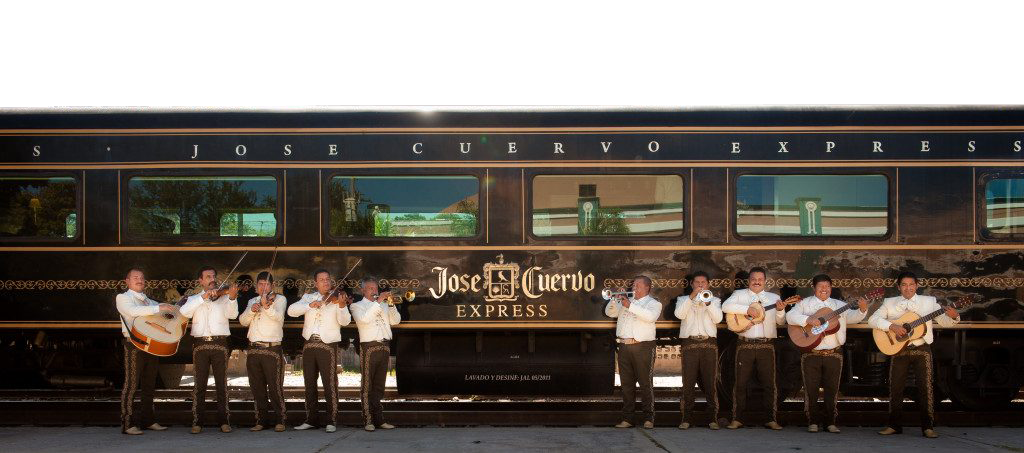
Like every Saturday, the ritual maintains the tradition: “Welcome to Mundo Cuervo, the experience of tequila, because when you say José Cuervo, you actually say tequila,” comments the blushing guide when assigning places on the train.
As our guide struggling to make himself understood with the noise of the old railway machine and the screams of tourists from the neighboring country looking for the first glass of tequila to experience in their own throat that of “seizing heat”, and in turn receiving the guest of honor with an open stomach that, dressed in white or aged, will accompany the journey to the magical town of Tequila.
Through the window, a few kilometers from leaving the Modern Colony of Guadalajara, the blue parade begins: small, medium and large agaves, ready to finish their respective eight years of maturation, and thus become the sign of distinction of the country.
Agaves small, medium and large, ready to finish their respective eight years of maturation, and thus become the sign of distinction of the country.
When a Mexican travels abroad there are two common places and two questions that he has to answer by law: “How do you like AMLO?” And “Did you bring tequila?” Facing the tracks, behind them, on one side and the other, the second question is very easy to answer.
Even with the fog covering the landscape, the tips of the Tequilana agave – one of the more than 200 types in North America – look like the red paliacates of the hundreds of Efraínes that walk between the plants, having as a background landscape La Tetilla hill, that old dormant volcano that also participates in history.
At the shout of “next station, Tequilaaaa”, those who can go down without tripping jump to the platform. The others, with red cheeks and eyes losing orbit, ask for a glass of water to start over.
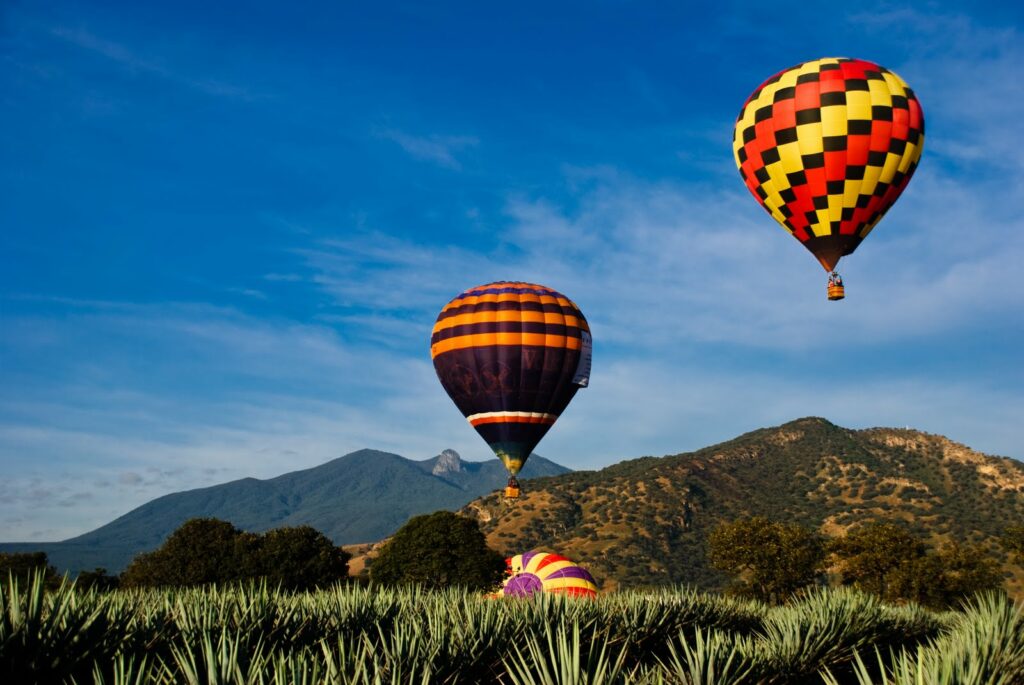
The landscape has changed. Now, the parish of Santiago Apóstol is the fund for the guide to give two great announcements: “Tequila was declared a World Heritage Site ten years ago, on July 12, 2006… And the bathrooms are nearby, at Solar, where we will have a snack and yes, one or the other Tequilita Cuervo more ”.
Here, tequila lives comfortably and at ease, among oak wood, canteens and restaurants.
Live spoiled and among artists: paintings by José de Jesús Benjamín Buenaventura de los Reyes and Ferreira – better known as Chucho Reyes – and sculptures by Juan Soriano, give the ideal context to move from the right tequila to the author’s cocktail bar.
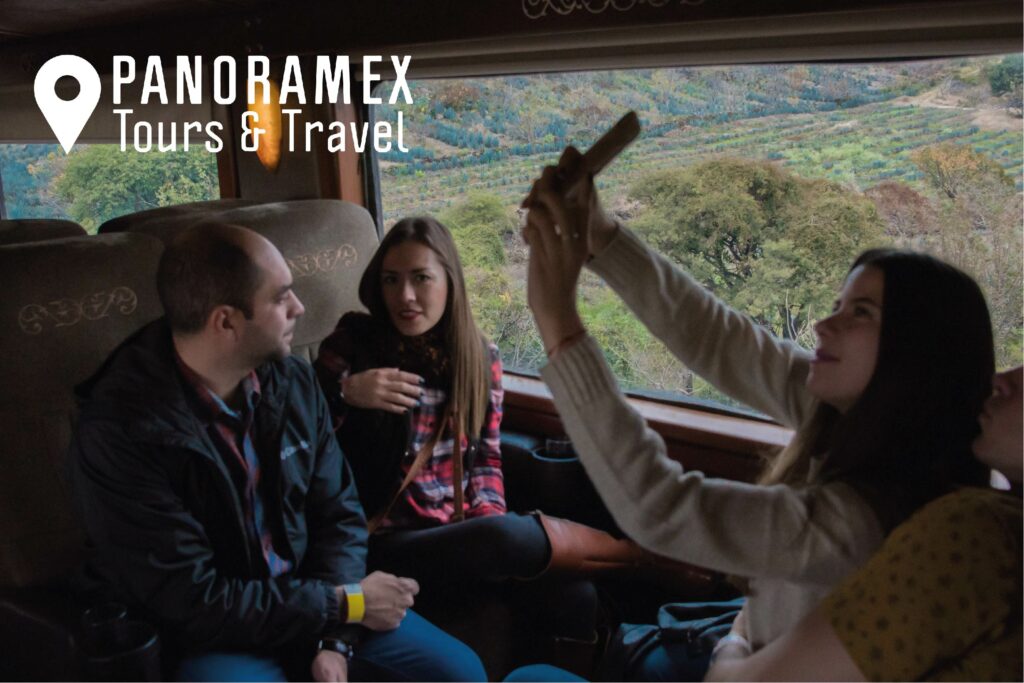
La Rojeña factory, releases its perfume as a sign that The ovens are ready to receive agave pineapples and work.
There, there is Efrain. Raise the coa, measure the blow and clean the heart of the plant. In five minutes he has repeated it a dozen times with a perfection that competes with any of the machines that appear between the walls of the distillery.
The guide, who closely monitors those who believe that the oven is a space for photographs, invites you to try the uncooked pineapple. Efrain lifts the coa. He drops it. He offers a piece and says: “Remember me in the next cup.”
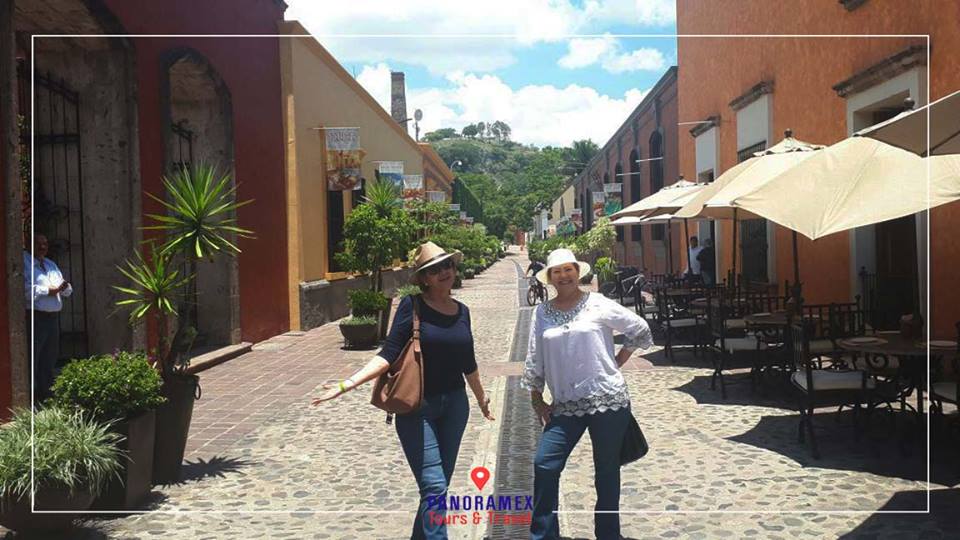
Thirty steps later it is impossible to forget Efrain. From an oak barrel made in Kentucky, the guide extracts three glasses of white liquor: “This is tequila as it was known at the beginning. 55 degrees, and it’s time to meet him, ”he says and smiles, knowing the reaction of each one who has been there.
They have not passed more than 30 steps (impossible to have certainty after this glass) when three barrels appear – now of French origin – made in the old region of Limousin (today Aquitaine) dripping, demanding a horse that receives everything they have to offer -añejos, reposados and a black preserved in casks that were home to a Scotch-.
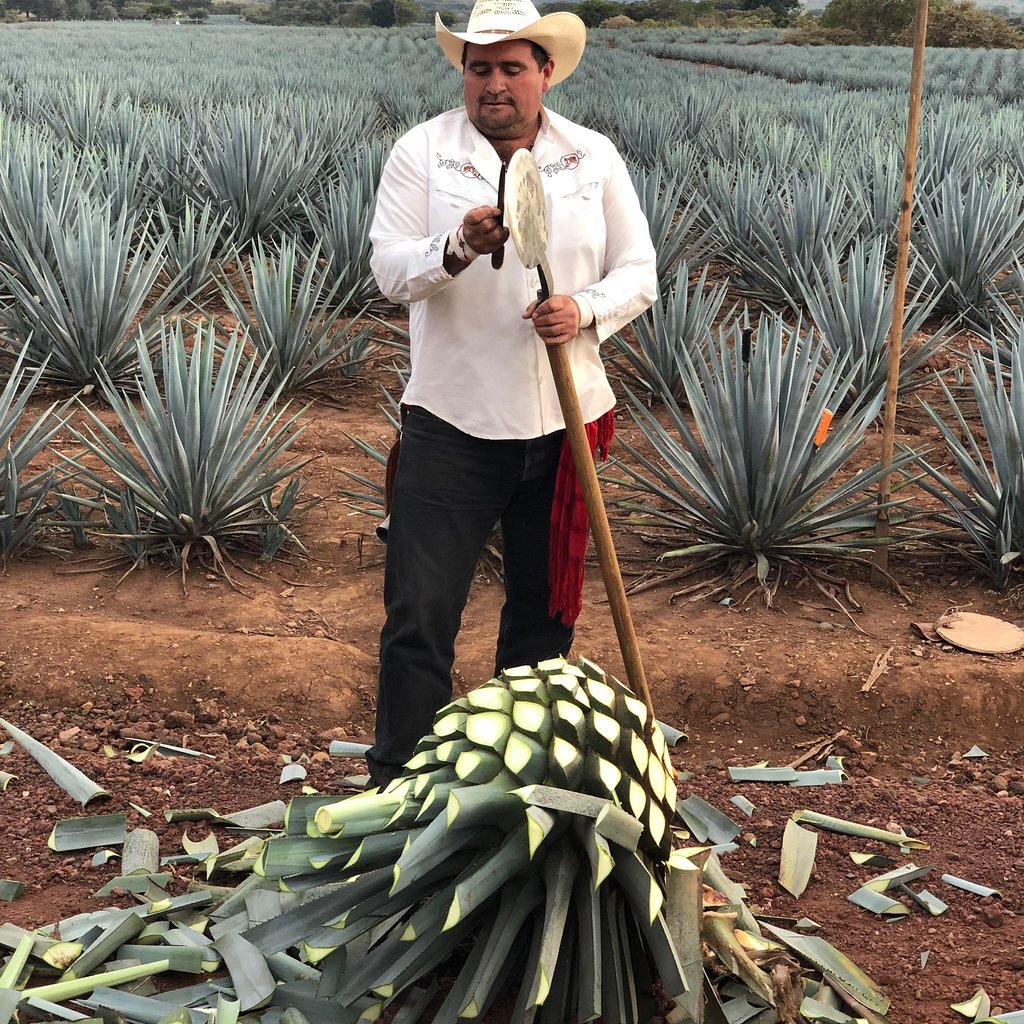
The guide reappears: “I pass a horse to tell you the story of a glass that takes its name from when people traveling on horseback were looking for a half of tequila that could be taken to take on the horse: the horse.”
The group has shrunk a lot on the road through La Rojeña. Some, after the fourth tequila, return to the hotel. Those that remain have the jackpot: a view of José Cuervo’s cava where more than 200 lady-daughters keep the ideal spirit of tequila.
The perfection Efraín spoke of is explained in one sentence: “Here, our jimadores have their museum. The story of his parents and grandparents. From the parents of his grandparents. 300 years of tequila and you, are going to take a bit of the story, ”says the guide and drops the best Family Reserve in the glass.
The trip and the last drop came to an end. It’s true, Tequila has to go, but it is clear that the world of Don José has a happy ending. outside, Efrain lifts the coa, the paliacate receives another drop of sweat and the story begins again.
Tickets to Jose Cuervo Express Here
